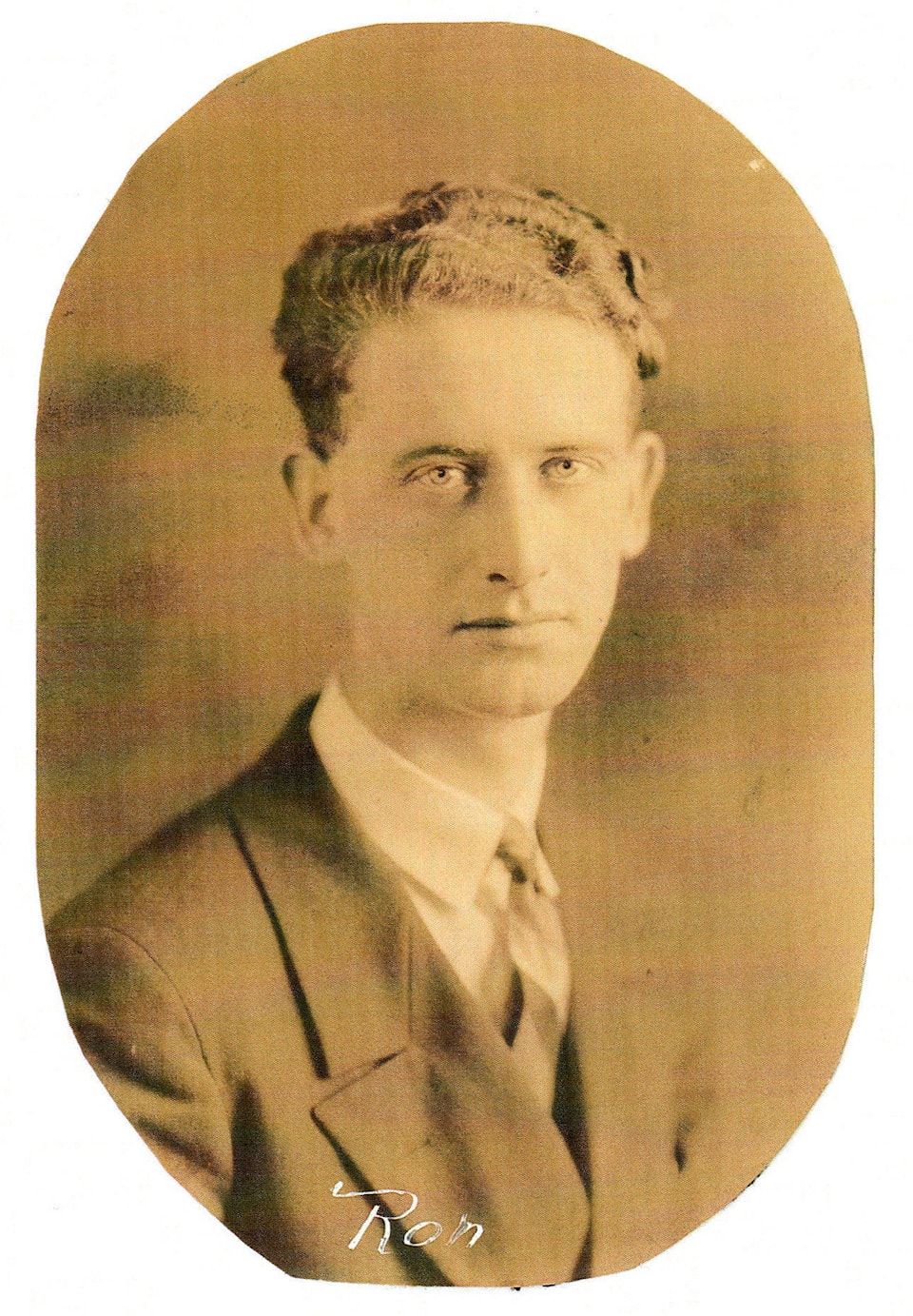In 1923, in exchange for a salary of $108 per month, a city boy named J. Ronald Todd accepted the job of principal and teacher at the Topley Public School. He and his mother left Vancouver, B.C. in late August, traveling north by steamship to Prince Rupert. After spending a night in that fair city, they boarded the Canadian National Railway for Topley.
After a day and a night on the train, they arrived at their destination to find (as Todd wrote years later) “practically the entire populace, including almost all of the school children, awaiting us at the station.”
In 1923, according to Todd, the community of Topley consisted of a railway station, a general store, the Holmes family residence, another log cabin occupied by Clint Johnson (the itinerant Methodist minister), the schoolhouse, and “a few sheds and outhouses.” A forest fire had recently swept through the area, leaving in its wake large patches of purple fireweed.
The Todds boarded with the Bartley McCrea family, who operated the store, while local residents set about constructing a new cabin for the newcomers. When complete, it “consisted of one small room and two smaller bedrooms – one layer of boards lined with tar paper. Furnishings included two beds, a few chairs, a cook stove and a tin heater, and a sink, but no running water. A well was close by.”
Sixteen children in six grades (1, 2, 3, 5, 6 and 8) attended the Topley School in 1923. Todd placed a major emphasis on arithmetic, reading and literature, grammar, and spelling, with a lesser emphasis on geography, history, drawing, nature study, and music.
“For physical education, all pupils stood by their desks for a few minutes each day and performed simple arm exercises under my direction,” he said.
Todd and his mother participated in community events, attending dances held in the school. Local residents often invited them to dinner. The newcomers graciously accepted most of these offers, but there were exceptions.
“Mr. and Mrs. [name omitted] asked us a number of times to spend the weekend at their farm,” he recalled. “For various reasons, we gently but firmly refused. Audrey Horning, my predecessor as teacher, told us that she had captured bed bugs in a bottle while spending a weekend (there).”
Mrs. Name Omitted made quite an impression on the young teacher. “(She) always demonstrated great social aplomb – she was a member of the School Board – but her housekeeping methods left something to be desired. I remember that members of the family, two boys and two girls, always made much ado about the cakes their mother made – rather tasteless as I remember, and often containing items such as thimbles, buttons, nails, or toothpicks! The lucky person who found one or another of these in his or her piece of cake was supposedly destined to become, respectively, a dressmaker, tailor, carpenter, or lumberjack.”
Todd lasted one year as Topley’s teacher. He and his mother returned to Vancouver at the end of June 1924. “I had enjoyed the year in Topley, but had no wish to return there,” he recalled years later. “It was too far from Vancouver to suit me, the community was too small, and there was absolutely no possibility of professional advancement unless I could have joined the grade school teaching staff in Smithers, the nearest town of any size.”
Todd went on to teach in Albion, then attended the University of British Columbia. Later, he moved to Seattle and became a librarian in the University of Washington – a post he held for 41 years.
© Michael Riis-Christianson and the Lakes District Museum Society
